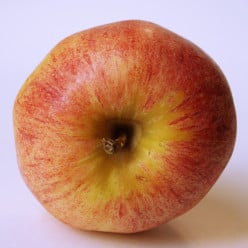What is the role of chlorophyll in plants?
Chlorophyll is vital for photosynthesis, which allows plants to absorb energy from light.
Chlorophyll is a chemical that traps the energy coming from the sun and converts this energy into a form that is useful to the plants. Plants then use this energy to make their own food (like starch and other sugar containing food in their fruits or roots) as well as power their other functions. We people, and other animals therefore get our own supply of energy when we eat the food made by plants.
Cholorphyll contains a magnesium ion. When light strikes the ion some electrons jump off the ion and become involved in a series of steps producing energy molecules for the cell, including ATP, before returning in the cycle back to the magnesium. It takes light energy, and allows plants to make chemical energy.
Ther role of chlorophyll is very similar to that of RBC (Red Blood Cells) in vertibrates ...means of delivering oxygen (O2) to the body tissues via the blood flow through the circulatory system. They take up oxygen in the lungs or gills and release it while squeezing through the body's capillaries.....same way
Chlorophyll is vital for photosynthesis , which allows plants to absorb energy from light... chlorophyll serves two primary functions. that is to absorb light and transfer that light energy by resonance energy transfer to a specific chlorophyll pair in the reaction center of the photosystems. This reaction is how plants produce O2 gas, and is the source for practically all the O2 in Earth's atmosphere.Chlorophyll is what allows plants (and other organisms with it such as algae and cyanobacteria) to do the synthesis part of photosynthesis. When the cell combines the small molecules of carbon dioxide and water into the larger molecules of glucose, the chemical bonds that hold these glucose molecules together require energy. That energy comes from chlorophyll's ability to remove electrons from water molecules and use light energy to boost their energy. (In aquatic plants you can see oxygen bubbles accumulate on the leaves. This oxygen comes from the water molecules that were split.)
The energy in these high-energy electrons is used to make ATP, and as part of hydrogen atoms that get bonded into the glucose molecule. The photosynthesizing cell is able to convert some of the light energy that reaches its surface into the bonds of an energy-rich molecule--glucose. The glucose may get converted into still larger molecules, such as cellulose (in plant cell walls) or starch.
When the plant cell (or a cell from an animal that has eaten it) later breaks the glucose molecule down, some of the energy released when the bonds are broken is used by the cell to perform work, such as moving molecules across membranes or building other, larger molecules. The process where cells release energy form glucose in the presence of oxygen is call cellular respiration.
Related Discussions
- 38
Satan is the father of all lies, yet God tells lies?
by wormdo 7 years ago
I'll be the first to admit that it's been a long time since I read the Bible, and this forum is filled with people who know more about the Bible than I do. Which is why I come to you with this question:Satan is the father of all lies. Yet God has told lies in the Bible before. To give an example:...
- 3
What is the primary function of photosynthesis?
by Teresa Coppens 11 years ago
What is the primary function of photosynthesis?
- 47
Einstein, Ignorance, and Atomic Bombs
by AKA Winston 13 years ago
An exchange in a hub's comment section led me to wonder how many people are confused by misinformation about Albert Einstein's famously promoted equation: E=MC2.This equation has nothing to do with conversion of matter into energy - in fact, it argues against that possibility. All E=MC2 means...
- 2
What are the properties of a surface that eliminates the kinetic energy of anyth
by PhyronX 14 years ago
What are the properties of a surface that eliminates the kinetic energy of anything it touches?Basically, what would happen if I tried to punch such a surface? If air molecules came into contact with it? What if I just touched it?
- 6
how many plants can you put under one UFO LED grow light ?
by cburn 3 years ago
how many plants can you put under one UFO LED grow light ?I am attempting to start a small home garden for Medical use in California and I am curious about light
- 3
effects of CO2 increase on photosynthesis of land plants
by Adnan Latif 11 years ago
effects of CO2 increase on photosynthesis of land plants











